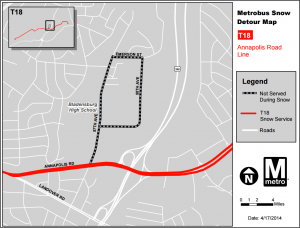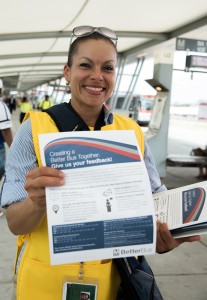Why Metrobus Matters for a Region full of Bus Systems
 Jim Hamre, the Director of Metrobus Planning and Scheduling, explains that although decision-making often gets made at the local level, Metrobus is a collective regional asset that is critical to the region’s success.
Jim Hamre, the Director of Metrobus Planning and Scheduling, explains that although decision-making often gets made at the local level, Metrobus is a collective regional asset that is critical to the region’s success.
Metrobus Has Long Been an Important Part of a Coordinated Regional System
For decades, Metrobus and local bus operators have coordinated to develop and enhance the regional transportation network. Local systems have strategically expanded service in places where Metrobus did not exist, was not well suited to serve, or did not have fleet or facility resources as the rail system expanded and changed travel patterns. Considerable time and effort went into the restructuring of bus services to coincide with the expansion of Metrorail to form a balanced network that generally made policy, practice and economic sense. The 1997 Regional Mobility Panel (PDF) reestablished the importance of a regional bus network, and delineated the general service responsibility among local providers and Metrobus, although the local/regional balance has changed in the intervening years.
Among other factors, Metrobus is important to the region because it: Read more…


![Bus%20Gallery%20Place%20041816-5908[1]](https://planitmetro.com/wp-content/uploads/2016/06/Bus-Gallery-Place-041816-59081-300x222.jpg) These adjustments aim to improve system reliability, route simplicity, and customer service. The bulk of this service change impacts bus routes in Virginia. Check below to see if your routes will be affected and look up
These adjustments aim to improve system reliability, route simplicity, and customer service. The bulk of this service change impacts bus routes in Virginia. Check below to see if your routes will be affected and look up ![Sarbanes%20Transit%20Center%20pm%20112415-5881[1]](https://planitmetro.com/wp-content/uploads/2016/03/Sarbanes-Transit-Center-pm-112415-58811-300x200.jpg)

![R%20I%20Ave%20night%20121615-7986[1]](https://planitmetro.com/wp-content/uploads/2016/03/R-I-Ave-night-121615-79861-1024x507.jpg)








Recent Comments